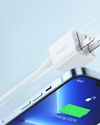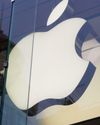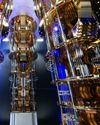Poging GOUD - Vrij
APPLE AND TSMC POISED TO BRING 2NM SILICON TO IPHONE 18, EXTENDING A DECADE OF MINIATURIZATION
AppleMagazine
|November 14, 2025
Apple is preparing to push its iPhone silicon roadmap into the 2-nanometer era with the iPhone 18 cycle, aligning with TSMC's next major process node and reinforcing the long pattern of annual gains in performance per watt.
-
The plan builds on Apple's strategy of pairing custom CPU and GPU architectures with the foundry's most advanced manufacturing, using tighter transistor geometries to lift speed, reduce leakage, and extend battery life under sustained loads.
 HOW 2NM FITS THE ROADMAP APPLE HAS FOLLOWED SINCE A11
HOW 2NM FITS THE ROADMAP APPLE HAS FOLLOWED SINCE A11Moving to 2nm continues a cadence that has defined Apple's mobile chips for years. The A11 Bionic in 2017 marked the jump to 10nm, followed by the A12 at 7nm, a refinement with the A13 on enhanced 7nm, a more substantial shift to 5nm with the A14, and an efficiency-focused 5nm refresh in the A15. Apple then migrated to TSMC’s 4nm class for the A16 before adopting first-generation 3nm for A17 Pro, which brought larger GPU blocks, hardware ray tracing, and higher transistor budgets while keeping thermals in check for thin phone enclosures. Each transition has been less about raw peak clocks and more about the composite metric that matters in handhelds: work done per joule, sustained performance within a small thermal envelope, and responsiveness under mixed CPU/GPU/Neural workloads.
At 2nm, the physics push further. Shrinking standard cell dimensions allows Apple to either pack more functional units into the same die area or hold die size roughly constant and return the density benefit as lower power. Recent generations show how Apple tends to do both in balance: add architectural features where they matter to the user experience, then spend the remainder of the node's efficiency dividend on battery life and sustained frame rates. The net effect, cycle after cycle, is that graphics pipelines grow more capable, machine-learning blocks gain headroom for larger context windows and multimodal models, and CPU cores raise single-threaded bursts without incurring thermal throttling in everyday use.
Dit verhaal komt uit de November 14, 2025-editie van AppleMagazine.
Abonneer u op Magzter GOLD voor toegang tot duizenden zorgvuldig samengestelde premiumverhalen en meer dan 9000 tijdschriften en kranten.
Bent u al abonnee? Aanmelden
MEER VERHALEN VAN AppleMagazine

AppleMagazine
DOES FAST CHARGING DAMAGE YOUR PHONE'S BATTERY? EXPERTS EXPLAIN WHAT REALLY HAPPENS OVER TIME
As smartphones adopt increasingly powerful charging systems—some now reaching 100 watts or more—a recurring question continues to circulate among users and engineers alike: does fast charging harm a phone's battery in the long run? Recent findings suggest the answer is more nuanced than simple yes or no, depending largely on how the technology is implemented and how consistently it’s used.
3 mins
November 14, 2025

AppleMagazine
APPLE'S QUIET SATELLITE STRATEGY IS STARTING TO LOOK LIKE A LONG-TERM CONNECTIVITY PLAN
Apple's gradual expansion into satellite technology—once viewed as a niche safety initiative—is beginning to resemble a long-term connectivity roadmap that could redefine how future iPhones, Watches, and even Mac devices communicate.
3 mins
November 14, 2025

AppleMagazine
APPLE DEVELOPS NEXT-GENERATION SATELLITE FEATURES FOR IPHONE CONNECTIVITY EXPANSION
Apple is advancing its satellite communication technology with a new wave of features designed to expand iPhone connectivity beyond conventional cellular networks.
3 mins
November 14, 2025

AppleMagazine
OOKLA UNVEILS SPEEDTEST PULSE, A NEW NETWORK DIAGNOSTIC DEVICE FOR PROFESSIONAL AND ENTERPRISE USE
Ookla, the company behind the Speedtest platform, has unveiled Speedtest Pulse, a new hardware-based diagnostic system developed to provide continuous network monitoring for service providers, broadcasters, and enterprise infrastructures.
3 mins
November 14, 2025

AppleMagazine
IPHONE AIR 2 MAY BE DELAYED INDEFINITELY AS APPLE REFOCUSES DEVELOPMENT PRIORITIES
Apple's followup to the lightweight iPhone Air may not arrive on schedule.
3 mins
November 14, 2025

AppleMagazine
GOOGLE PHOTOS FOR IOS ADDS “HELP ME EDIT” AI FEATURE FOR NATURAL LANGUAGE PHOTO ADJUSTMENTS
Google has begun rolling out its “Help Me Edit” feature on Google Photos for iOS, extending one of its core generative AI tools to Apple devices.
2 mins
November 14, 2025

AppleMagazine
IBM ANNOUNCES MAJOR BREAKTHROUGH IN QUANTUM COMPUTING, SIGNALING A NEW PHASE FOR COMMERCIAL APPLICATIONS
IBM has unveiled a significant advancement in quantum computing, one that could accelerate the technology's shift from laboratory research to large-scale industrial use.
3 mins
November 14, 2025

AppleMagazine
US-CHINA CHIP AND AI COMPETITION SHIFTS TO THE DATA CENTER FRONT
The ongoing technological rivalry between the United States and China has entered a new phase centered on data centers, where both nations are rapidly expanding investments in AI infrastructure, semiconductor design, and cloud computing capacity.
3 mins
November 14, 2025

AppleMagazine
SURVEY REVEALS AI-GENERATED MUSIC IS NOW VIRTUALLY INDISCERNIBLE FROM HUMAN COMPOSITION
A new study has revealed that listeners can no longer reliably distinguish between human-created music and songs generated entirely by artificial intelligence, highlighting how far machine-learning models have come in replicating musical expression, texture, and emotional tone.
3 mins
November 14, 2025

AppleMagazine
ELON MUSK TEASES NEW TESLA OPTIMUS CAPABILITIES IN “ROBOCOP”-LIKE DEMO
Tesla CEO Elon Musk has once again pushed the boundaries of robotics showmanship, teasing a new demonstration of the company's humanoid robot Optimus that drew instant comparisons to the cinematic cyborgs of RoboCop.
3 mins
November 14, 2025
Listen
Translate
Change font size
